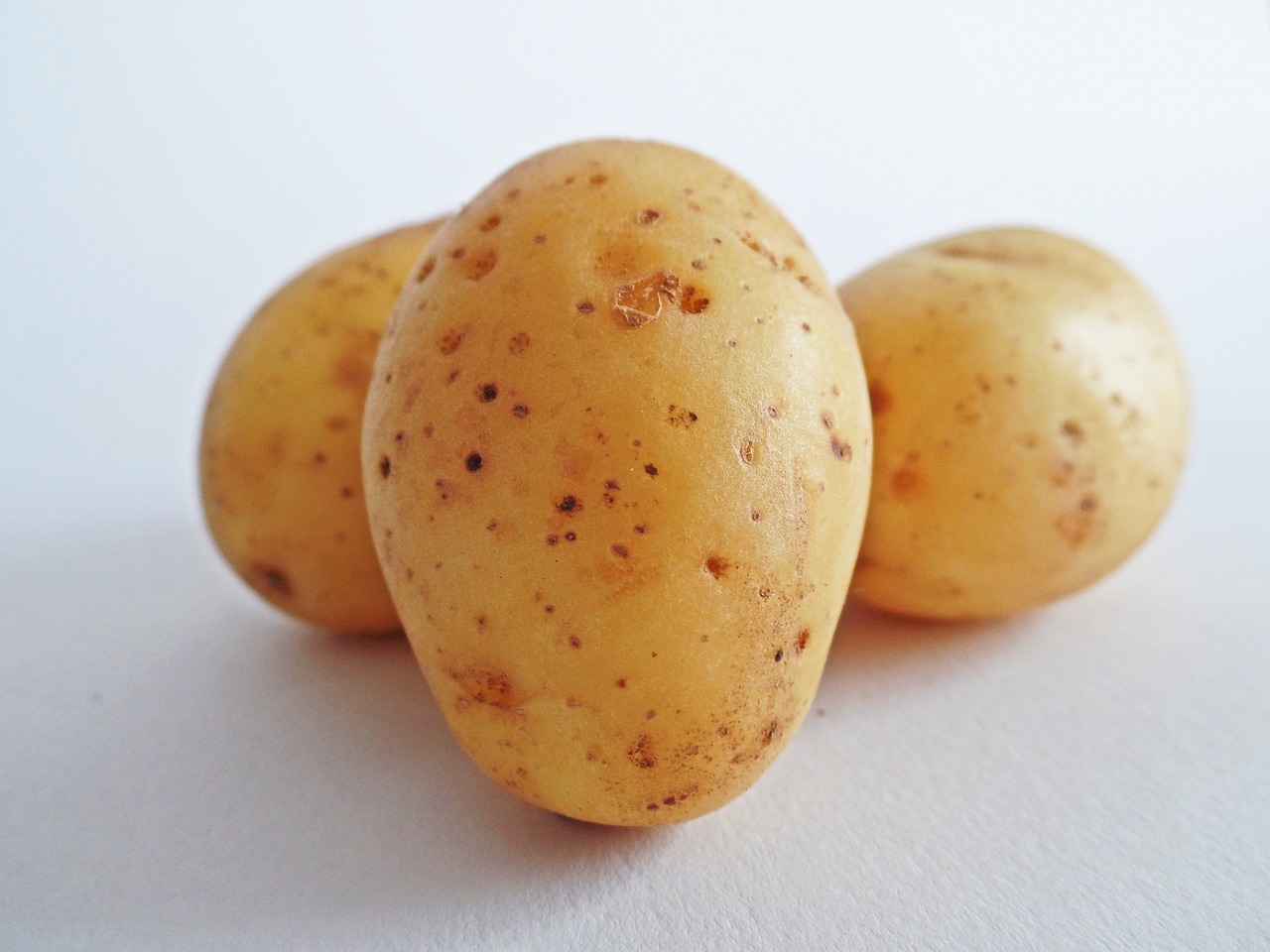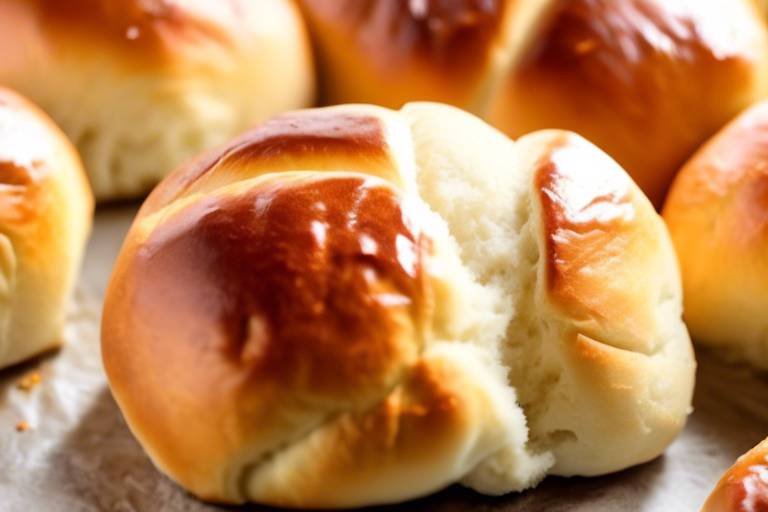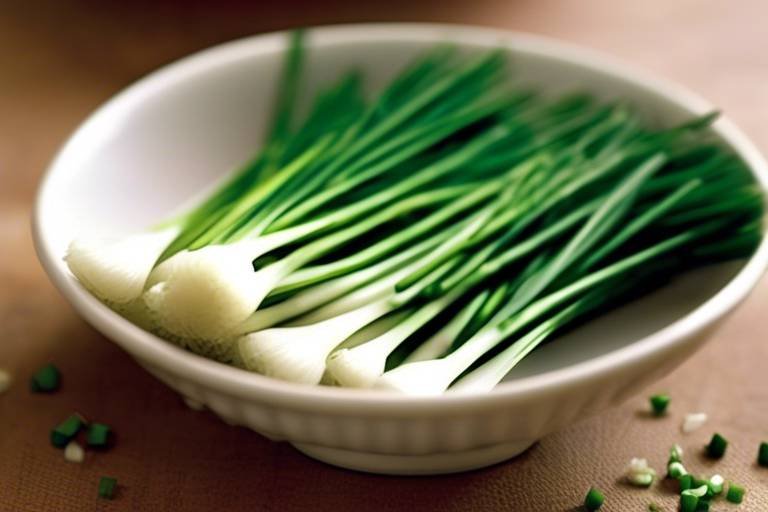How to Make Creamy Mashed Potatoes Every Time
Are you tired of lumpy, bland mashed potatoes that fail to impress your dinner guests? Fear not, as achieving perfectly creamy mashed potatoes every time is within your reach! With the right techniques and ingredients, you can elevate this humble side dish to a culinary masterpiece that will have everyone coming back for seconds.
When it comes to making creamy mashed potatoes, the first step is selecting the right potatoes. Not all potatoes are created equal, and choosing the best variety can make a world of difference in the final result. Russet potatoes are a popular choice for their high starch content, which helps create a fluffy and creamy texture when mashed.
Proper cooking techniques are also essential for achieving creamy mashed potatoes. Whether you prefer boiling, steaming, or baking your potatoes, the key is to cook them until they are fork-tender. Overcooking can lead to waterlogged potatoes, so keep a close eye on them to ensure they are just right.
Using the right tools can significantly impact the consistency of your mashed potatoes. A potato masher or ricer is ideal for achieving a smooth and creamy texture, while a hand mixer or food processor can result in a more whipped consistency. Experiment with different tools to find the one that works best for you.
Adding ingredients for flavor is where you can get creative with your mashed potatoes. While butter and milk are classic choices, consider incorporating ingredients like garlic, herbs, or cheese for a flavor boost. Just be sure not to overpower the natural taste of the potatoes, as the goal is to enhance, not mask, their delicious flavor.
When it comes to mashing, the technique you use can make a difference in the final texture of your potatoes. Avoid overmixing, as this can result in a gummy consistency. Instead, gently mash the potatoes until just combined for a perfectly creamy result.
Dairy products play a crucial role in achieving creamy mashed potatoes. Butter, milk, cream, or sour cream can all be used to add richness and creaminess to the dish. Experiment with different dairy options to find the combination that suits your taste preferences.
Seasoning your mashed potatoes to perfection is the final step in creating a truly delicious dish. Salt and pepper are essential, but don't be afraid to get creative with additional seasonings like garlic powder, paprika, or fresh herbs. Taste as you go to ensure the flavors are well-balanced.
When it comes to serving and presentation, remember that we eat with our eyes first. Consider garnishing your creamy mashed potatoes with a sprinkle of fresh herbs, a pat of butter, or a drizzle of olive oil. Serve them in a decorative bowl or shape them into individual portions for an elegant touch.

Selecting the Right Potatoes
When it comes to making creamy mashed potatoes, selecting the right type of potatoes is the first step towards achieving perfection. The ideal potatoes for creamy mashed potatoes are high-starch varieties such as Russet or Yukon Gold potatoes. These types have a fluffy texture when cooked, making them easier to mash and resulting in a creamier consistency.
Why are high-starch potatoes preferred? High-starch potatoes have less moisture and a higher starch content, which means they break down easily when cooked, resulting in a smoother and creamier texture. On the other hand, low-starch potatoes like red potatoes or new potatoes tend to hold their shape better, making them less suitable for mashing.
Texture matters: Consider the texture you want in your mashed potatoes. If you prefer a smoother and silkier consistency, opt for high-starch potatoes. However, if you like a chunkier texture with some potato pieces remaining, you can choose a lower-starch variety.
Color and flavor: While the color of the potatoes may not affect the creaminess of the mash, it can influence the overall appearance of the dish. Yukon Gold potatoes, for example, have a rich yellow color that adds vibrancy to the mashed potatoes. Additionally, different potato varieties can offer subtle flavor differences, so choose based on your taste preferences.
Experimentation is key: Don't be afraid to experiment with different potato varieties to find the perfect match for your creamy mashed potatoes. Each type of potato brings its unique characteristics to the dish, so trying out various options can help you discover your favorite combination of flavor and texture.

Proper Cooking Techniques
When it comes to creating the perfect creamy mashed potatoes, the cooking techniques you use play a crucial role in achieving that desired texture. Properly cooking the potatoes is essential to ensure they turn out creamy and smooth, ready to melt in your mouth with each bite. Let's delve into the various cooking methods that can help you achieve the ideal consistency for your mashed potatoes.
One of the most common and effective methods for cooking potatoes is boiling. By submerging the potatoes in boiling water, you can ensure they cook evenly and become tender enough to mash easily. Another option is steaming, which helps retain the potatoes' natural flavors and nutrients while also yielding a creamy texture. Additionally, baking the potatoes can intensify their flavor and create a rich, creamy base for your mashed potatoes.
Each cooking technique offers unique benefits that can influence the final outcome of your mashed potatoes. Experimenting with different methods can help you discover which one works best for your preferences and desired level of creaminess. Remember, the key is to cook the potatoes until they are soft and easily mashable, ensuring a smooth and velvety consistency in your dish.

Using the Right Tools
When it comes to making perfectly creamy mashed potatoes, using the right tools can significantly impact the final result. The key tool for achieving that velvety texture is a potato masher. This handheld tool allows you to easily mash the potatoes to the desired consistency without overworking them, which can result in a gluey texture.
Another essential tool to consider is a potato ricer. This device can produce incredibly smooth and lump-free mashed potatoes by pressing the cooked potatoes through small holes. The result is a luxurious and creamy texture that is sure to impress your guests.
If you prefer a more rustic texture with some lumps, a hand mixer can be a useful tool. Be cautious not to overmix the potatoes, as this can lead to a gummy consistency. Using a hand mixer on low speed can help you achieve a balance between creamy and slightly chunky mashed potatoes.
For those looking for a more modern approach, an immersion blender can be a handy tool. This versatile device can quickly blend the potatoes to a creamy consistency without much effort. However, be mindful not to overblend, as it can result in a gluey texture.
Lastly, a food mill is another tool that can help you achieve silky smooth mashed potatoes. By passing the cooked potatoes through the mill, you can remove any lumps and create a uniform texture that is both creamy and light.

Adding Ingredients for Flavor
When it comes to creating flavorful mashed potatoes, adding the right ingredients can take your dish to a whole new level. While the classic combination of butter and milk is always a winner, there are plenty of other ingredients you can incorporate to enhance the taste of your creamy mashed potatoes.
One popular option is to add roasted garlic for a rich and savory flavor profile. Roasting garlic brings out its natural sweetness and adds a depth of flavor that complements the creaminess of the potatoes perfectly. Simply squeeze the roasted garlic cloves into your mashed potatoes and mix well for a delicious twist.
Cheese is another fantastic ingredient that can elevate the flavor of your mashed potatoes. Whether you prefer sharp cheddar for a bold taste or creamy brie for a luxurious touch, adding cheese can bring a whole new dimension to your dish. Mix in the cheese while the potatoes are still warm to ensure it melts evenly throughout.
If you're looking to add a hint of freshness to your mashed potatoes, consider incorporating chopped herbs like chives, parsley, or dill. Herbs not only add a pop of color to your dish but also provide a burst of flavor that complements the creamy texture. Sprinkle the herbs on top before serving for a vibrant finish.
For a touch of indulgence, you can't go wrong with crispy bacon bits. The salty crunch of bacon adds a delightful contrast to the smoothness of the mashed potatoes, creating a truly irresistible combination. Crumble the bacon on top just before serving for a deliciously decadent treat.
Experimenting with different ingredients is a fun way to customize your mashed potatoes and cater to your taste preferences. Whether you opt for tangy sour cream, spicy horseradish, or earthy truffle oil, don't be afraid to get creative in the kitchen and discover new flavor combinations that will leave your guests craving more.

Techniques for Mashing
Tips and techniques for achieving perfectly creamy mashed potatoes that will impress your guests and elevate any meal.
Choosing the best type of potatoes is crucial for creamy mashed potatoes. Learn which varieties work best and why.
Discover the ideal methods for cooking potatoes to achieve a creamy texture, including boiling, steaming, or baking.
The tools you use can make a big difference in the consistency of your mashed potatoes. Find out which tools are best for the job.
Learn about the various ingredients you can add to mashed potatoes to enhance their flavor while maintaining a creamy texture.
When it comes to mashing potatoes, the technique you use can greatly impact the final texture. One common method is using a potato masher, which allows you to control the level of creaminess by adjusting the pressure applied. Another technique involves using a ricer, which results in a smoother and silkier texture. Whichever method you choose, be sure to avoid over-mixing, as this can lead to gummy mashed potatoes. Experiment with different techniques to find the one that suits your preference.
Discover how dairy products like butter, milk, cream, or sour cream can contribute to the creaminess of your mashed potatoes.
Tips on how to season your mashed potatoes properly to enhance the flavor and achieve a well-balanced taste.
Ideas for serving and presenting your creamy mashed potatoes to make them visually appealing and appetizing to your guests.

Incorporating Dairy
When it comes to making creamy mashed potatoes, incorporating dairy plays a crucial role in achieving that velvety smooth texture that everyone loves. Dairy products such as butter, milk, cream, or even sour cream can add richness and creaminess to your mashed potatoes, taking them to a whole new level of deliciousness.
Butter is a classic choice for adding richness to mashed potatoes. Its creamy texture and rich flavor can enhance the overall taste of the dish. When using butter, opt for unsalted butter to have better control over the saltiness of the final dish. Additionally, using room temperature butter will help it blend more easily into the potatoes.
Milk is another common dairy ingredient used in mashed potatoes. It adds a creamy consistency without overwhelming the flavor. When incorporating milk, warm it up slightly before adding it to the potatoes to prevent them from cooling down too much. You can also infuse the milk with herbs or garlic for an extra flavor boost.
Cream is a luxurious option for those looking to indulge in extra creamy mashed potatoes. It provides a rich and decadent texture that elevates the dish to a gourmet level. For a lighter alternative, you can use half-and-half, which offers a balance between creaminess and a lighter texture.
Sour cream is a tangy addition that brings a unique flavor profile to mashed potatoes. It adds a subtle tanginess that complements the richness of the dish. To incorporate sour cream, fold it in gently at the end of the mashing process to maintain its creamy texture and tangy flavor.
Experimenting with different dairy options and combinations can help you find the perfect balance of creaminess and flavor for your mashed potatoes. Whether you prefer a classic buttery taste or a more decadent creamy texture, incorporating dairy allows you to customize your mashed potatoes to suit your preferences.

Seasoning to Perfection
When it comes to seasoning mashed potatoes to perfection, it's all about finding the right balance of flavors to complement the creamy texture. Salt is a crucial component that enhances the natural flavors of the potatoes, so be sure to add it gradually and taste as you go to avoid over-seasoning. Additionally, black pepper can provide a subtle kick of heat that pairs well with the richness of the potatoes.
For a more aromatic touch, consider incorporating herbs like chives, parsley, or thyme into your mashed potatoes. These herbs not only add a pop of color but also infuse the dish with a fresh and earthy flavor profile. You can either chop the herbs finely and mix them into the potatoes or use them as a garnish for a visually appealing presentation.
Garlic is another popular seasoning choice that can elevate the taste of mashed potatoes. Whether you opt for minced garlic cloves or garlic powder, the addition of garlic can bring a robust and savory dimension to the dish. Just be mindful of the amount you use to avoid overpowering the other flavors.
Experimenting with different seasonings like paprika, onion powder, or even a hint of nutmeg can add depth and complexity to your mashed potatoes. However, it's essential to taste as you season and adjust accordingly to ensure a harmonious blend of flavors.
Remember, seasoning is a personal preference, so don't be afraid to get creative and tailor the flavors to suit your taste buds. By mastering the art of seasoning, you can take your creamy mashed potatoes from good to exceptional, leaving your guests craving more with every bite.

Serving and Presentation
When it comes to serving and presenting your creamy mashed potatoes, there are several ways to make them visually appealing and appetizing to your guests. One popular method is to create a well of melted butter in the center of the mashed potatoes, allowing it to slowly melt and blend in as guests serve themselves. This not only adds a luxurious touch but also enhances the overall flavor of the dish.
Another creative presentation idea is to use a piping bag with a decorative tip to pipe the mashed potatoes onto the serving dish. This allows you to create beautiful swirls or peaks, giving your dish an elegant and professional look. You can also sprinkle some fresh herbs or a dusting of paprika on top for a pop of color and added flavor.
For a more rustic presentation, consider serving the mashed potatoes in individual mini cast-iron skillets or ramekins. This not only adds a charming touch to your table setting but also helps keep the mashed potatoes warm throughout the meal. You can top each serving with a pat of butter or a sprinkle of chives for a finishing touch.
If you're looking to impress your guests even further, consider serving your creamy mashed potatoes in hollowed-out roasted vegetables such as bell peppers or acorn squash. Not only does this presentation add a unique twist to the dish, but it also provides an extra element of flavor and texture that will delight your guests.
Frequently Asked Questions
- What type of potatoes are best for creamy mashed potatoes?
For creamy mashed potatoes, it is recommended to use starchy potatoes like Russets or Yukon Golds. These varieties have a high starch content, which results in a smoother and creamier texture when mashed.
- How can I prevent my mashed potatoes from becoming gluey?
To avoid gluey mashed potatoes, be careful not to overmix or overwork the potatoes once they are mashed. Additionally, using a potato masher instead of a food processor can help maintain a better texture.
- Can I make mashed potatoes ahead of time?
Yes, you can make mashed potatoes ahead of time. To reheat them, place the mashed potatoes in an oven-safe dish, cover with foil, and heat in the oven until warmed through. You may need to add a little extra butter or cream to restore the creamy consistency.
- What is the best way to store leftover mashed potatoes?
Leftover mashed potatoes can be stored in an airtight container in the refrigerator for up to 3-5 days. To reheat, add a splash of milk or cream and warm them on the stovetop or in the microwave, stirring occasionally.
- Can I freeze mashed potatoes?
While mashed potatoes can be frozen, the texture may change slightly upon thawing. To freeze, portion the mashed potatoes into airtight containers or resealable bags, leaving some room for expansion, and freeze for up to 2-3 months.



















